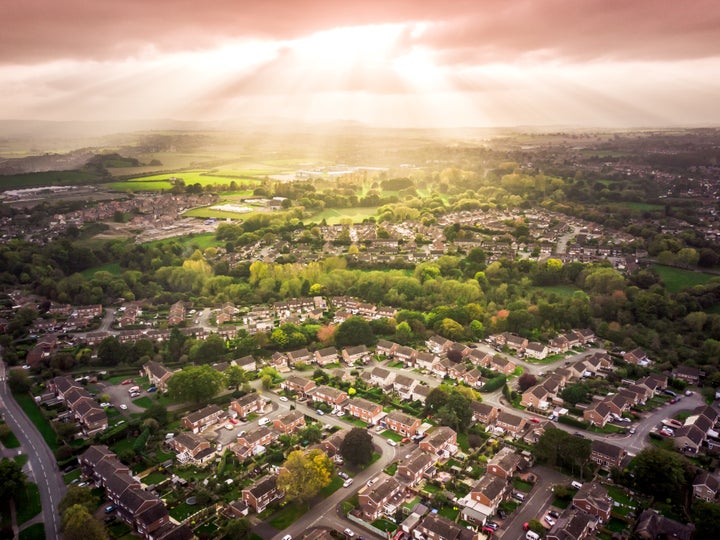
A major new investigation by the Bureau Local and HuffPost UK revealed austerity’s dirty little secret: massive funding cuts have been, in part, offset by a mass sell-off of public land. But what’s not being examined is who is buying that land, and what they are building on it. If used appropriately, surplus public land could be an important first step towards solving the housing crisis, but the present fire sale is, if anything, making it worse.
The Bureau’s research uncovered 12,000 public spaces sold into private ownership since 2014/15, ranging from grand metropolitan libraries to small patches of scrub land. Guy Shrubsole and Anna Powell Smith, in mapping landownership in England, discovered that £100million worth of the land sold-off by councils between 2017 and 2018 went to offshore companies. Earlier this year, Brett Christophers revealed that 10% of the UK’s land has transferred from public to private hands since 1979. In 2016, our own work at NEF revealed an alarming spread of sales from central government departments in recent years. The government itself claims to have sold 25% of the ‘core’ property holdings government departments since 2010.
Why are we offloading land at all? Ostensibly it’s to meet the government’s target: 160,000 new homes on previously public land by 2020. But the murky reality is that local authorities, like other public bodies, are selling land to fill the vast funding gaps driven by austerity. And it’s because of this fact that selling public land won’t generate the affordable homes that we desperately need to solve the housing crisis.
Local government funding has been cut in half between 2010/11 and 2017/18, so when government policy dictates selling surplus land, it’s no wonder that councils are using their land assets to plug the holes in their budgets. Birmingham City Council has used £53million from asset sales to balance its books, more than any other local authority in England, with as much as £26million of that revenue used to fund redundancies (also a result of austerity) at the council.
As NEF have shown, a key driver of the housing crisis is the price of land. When the incentive in selling public land is to raise cash to keep vital services afloat, councils inevitably sell to the highest bidder, as quickly as possible. While local authorities are technically allowed to sell at slightly less than the highest value (although many don’t out of financial necessity), central government departments are actually prohibited from selling land at lower than the ‘best consideration reasonably obtainable’. Developers cannot both build affordable housing and make a profit, because the price of land is prohibitively high. Expensive land leads to expensive houses. In this upside-down system, the price paid for land ultimately dictates what gets built when it should be the other way round.
This theory is laid bare in the planning documents that sit behind the sites. In our research on the central government sell off, we’ve come across countless examples of developers securing planning permission with promises of affordable housing, only to wriggle out of their commitments a few months later by claiming they can’t afford to.
Take Runwell Hospital in Wickford. Chelmsford City Council’s affordable housing plan requires that 35% of homes on new developments are affordable. Yet the site’s initial planning permission required only 20% affordable housing provision. Even so, the developer later submitted an application to reduce this further to just 10% on the grounds of affordability – just 61 of 575 homes.
Our research in 2017 revealed that:
Only one is five of the new homes to be built on sold-off public land is likely to be classed as ‘affordable’ (which, at 80% of market rates, is still largely unaffordable to those who need it most).
As little as 6% of new homes are likely to be social housing, and in some cases developments comprise solely of luxury properties.
New homes on formerly public land are dramatically behind schedule. At the current rate, the government’s target of building 160,000 homes will take until 2032 to achieve, 12 years later than promised.
Releasing land into the private market is not delivering the quantity or quality of affordable homes we need. As more land is sold, there is less opportunity to reverse these trends.
The sell-off of public land for hole-plugging cash receipts is not only economically short-sighted and unsustainable, it’s also driving the housing crisis. There is a clear tension between disposing of land to plug funding gaps and developing high-quality, genuinely and permanently affordable housing and other infrastructure. This year we are continuing to get to grips with the effect of the public land sale on the housing crisis. First up is a close look at NHS sites sold in the last year, then in the coming months we will be bringing together central government and local authority land sales to get a truly national picture of the sell-off. Only then can we build a picture of an alternative to the fire sale of public land, that results in the supply of genuinely affordable homes.
